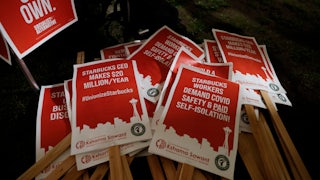There is no better cure for that harassing sense of poverty than a casual study of our statistics of wealth. The Census Bureau has recently reported that the wealth of the United States for the year 1912 was over one hundred and eighty-seven billions—thousands of millions—of dollars. It is a sum literally staggering, an aggregate immensely, one might almost say immeasurably greater than that possessed by any other nation at any time in history. Moreover, this wealth is stupendously growing. Within twelve years, between 1900 and 1912, it has increased by ninety-nine billions of dollars. Our mere increment in wealth in these twelve years was fourteen times as great as the total national wealth revealed by the Census of 1850.
Should we analyze these figures, however, we are likely to be more reserved in our self-congratulations. We may glory in the fact, revealed by such statistics, that the average man, woman and child in the United States possesses almost two thousand dollars, and the average family almost ten thousand. But as a matter of common observation we know that the overwhelming majority of American families possess no such sum. We gather from certain statistical studies that in Wisconsin the poorest 65 per cent of the population own only 5.2 per cent of the wealth, while the richest 2 per cent own 57 per cent of the wealth. We know that in the United States, as in England, France, Prussia and elsewhere, this new wealth, whatever else it may be, is most unevenly distributed. But we do not even know what is the true nature of this new wealth, whether it is a good or an evil or both, whether it is a benefit to al the people and a sign of healthy development, or an increasing burden upon increasing sections of the population.
What, after all, does it signify when we say that we are ninety-nine billion dollars richer than we were twelve years ago? Does it mean that we have proportionately more lands and mines and houses and railroads and automobiles? Does it mean that we have saved all the billions from our income and reinvested them in our national business? So stupendous a saving has never been known in any country on in any age. It would mean that during these last twelve years we had accumulated at a rate almost four times as rapid as was our rate of accumulation during the previous twenty years.
We should be saving more in one year than the total estimated wealth of the entire nation in 1850. It is not at all probable that this new increment in our wealth represents saving. Perhaps one-quarter or one-third—no one knows how much—does take the form of new and improved farms, railways, factories, houses. A greater part, however, is not new investment at all, but mere revaluation. It represents a higher price which we place upon a property which itself has not changed.
We must remember that what the community is really interested in is not private but social wealth. An individual citizen possesses certain material goods, or claims to goods and services; he owns houses, factories, railroad shares, government bonds, and is “worth” whatever he can get in exchange for these things. This is private wealth. If conditions change so that other people have to pay more for these articles, the owner is thereby richer. If, for one reason or another, commodities double in price, it is convenient for those who own the commodities and correspondingly inconvenient for those who do not own but need them.
For the community as a whole, however, this means neither an increase nor a decrease in wealth, for society is interested alone in social wealth, in the actual commodities existing in society and the pleasure and utility derived from them, and not in the price which one man has to pay to another. It does not benefit society if the value or the selling price of these commodities rises or falls, so long as their amount and utility remain the same. That is why this “statistical “ increase in our wealth is of comparatively little significance. Since there is no way of measuring and counting the utilities represented by our wealth, we are forced to make up our figures by simply adding together the sums of money which men will pay each other for the exchange of the commodities in the country. What seems to have happened in the last decade in the United States, as in other countries, is that social welfare has increased far less rapidly than has “statistical” wealth. In other words, much of the new wealth which we believe has come to us is quite illusory.
Let us analyze this new wealth of ninety-nine billions of dollars. We shall find at least five factors making for the increase. The first element is new capital saved from our annual product, in other words, new, more and better goods. The second element is a value due to a more intensive, a more economical and a better coordinated social utilization of our wealth. Then again our values have been increased because they are measured in gold, which has declined in value, and this increment is in itself no more significant than would be a doubling of the distance from New York to Boston due to a halving of the mile. Fourthly, we have an increase in values arising out of a reduction in interest charges, and a consequent capitalization of incomes at a higher rate. Finally, vast amounts of our wealth have been given a scarcity value; in other words, are worth more simply because there are relatively less of them.
We may observe the working of these factors, and especially of the last, in the increase in our farm values. We all know of farms which, in the course of ten years, have doubled or even quadrupled in value. But they are the same farms as before. In many cases they are no larger, no more fertile, with no more buildings, with no increased investment of capital. They are worth more because they will bring more, and they will bring more because they are relatively scarcer. As the country fills up, as an increased demand all over the world raises the prices of farm products, the value of our American farms rises automatically.
In 1900, they were worth twenty and a half billions of dollars; in 1910, forty-one billions, a jump in value of over twenty billions. Statistically the nation is wealthier by all these billions. But the real increase in national well-being is very much less than this sum, for primarily this increase in value is nothing hut the capitalized power of American farm owners to charge other Americans—and also foreigners—higher prices for farm products. It means that the farm is acquiring more and more a scarcity value. This is good for the land-owner but bad for the rest of us, while for the nation as a whole, disregarding our foreign commerce in food-stuffs, it may be either good or bad. What benefits the property owner increases the value of his property, and this increase swells our statistics of wealth. On the other hand, the burden upon food buyers, upon which this increase in farm values is largely based, does not appear as negative wealth on the other side of the ledger.
What is true of our farms is equally true of much of our city real estate. Here again an enormous increase in value in due in large measure to the fact that the supply increases more slowly than the demand. It is because we have little good city land, not because we have much, that our statistical wealth is so great. If available building land in New York City could be suddenly multiplied tenfold, rents would decline, the value of unimproved real estate would fall to almost nothing, and as a nation we should appear to be poorer because we had more land.
This is the secret of much of our increase in statistical wealth. W e appear richer because as a nation we have become relatively poorer in national resources. Everywhere the pressure of a growing population upon preempted resources results in higher prices, in a capitalization of these higher prices, and in a higher valuation of property. From one point of view this increase in our statistical wealth, in so far as it is not a mere reflection of a lower purchasing power of money, is an index of increased national power. When we say that we have one hundred and eighty-seven billions of dollars, a large portion of which is in the form of capital, we mean that we are paying, and under our present legal system must continue to pay, interest in some form or other upon this vast capital.
Year by year we must take some six or seven or more billions of dollars of our income and turn it over to the men who own our city lots, our buildings, our railroads, farms, factories, and other wealth. It is a sign of national vitality that we can annually pay these huge sums to “property” and still reserve enough to maintain some sort of a standard of living for propertyless workers. But it is surely of no obvious advantage to have too large a proportion of our national income diverted to “property.” We need not believe that a few men possess all property and the rest are totally disinherited to realize the danger of diverting a large portion of our national income to men who receive simply because they own. Our statistics of national wealth, therefore, are not so entirely encouraging as they appear at first glance. An enormous annual payment to “property” is dangerous so long as property is held individually and unequally.
However evenly such property might be divided in the present, a sharp tendency towards inequality is always present. Each year some two million babies are born in the United States, of whom many enter life without prospect of inheriting property. Our immigrants also come with nothing but their labor power, with no part in this vast aggregate of national wealth and national capital, which draws so large a proportion of our national income. Until we know more definitely what our distribution of wealth is we may well regard our increase in property values with suspicion.






